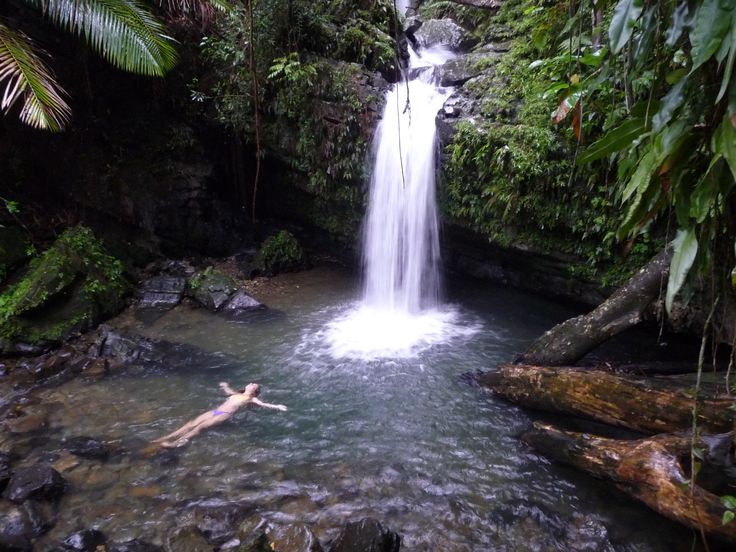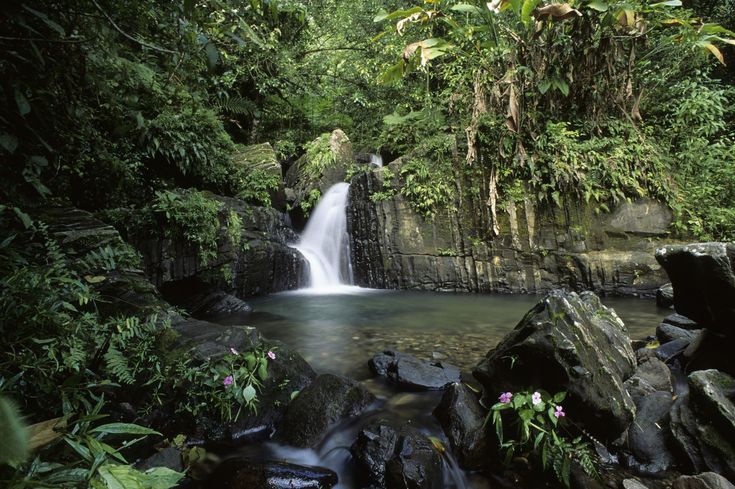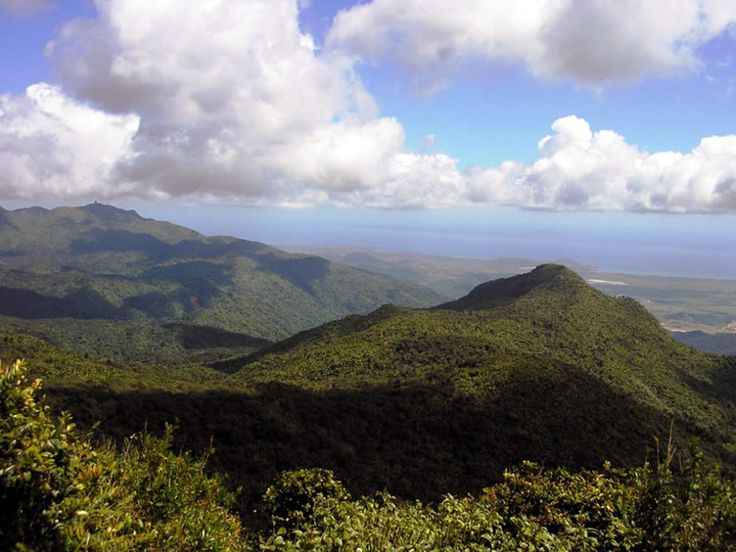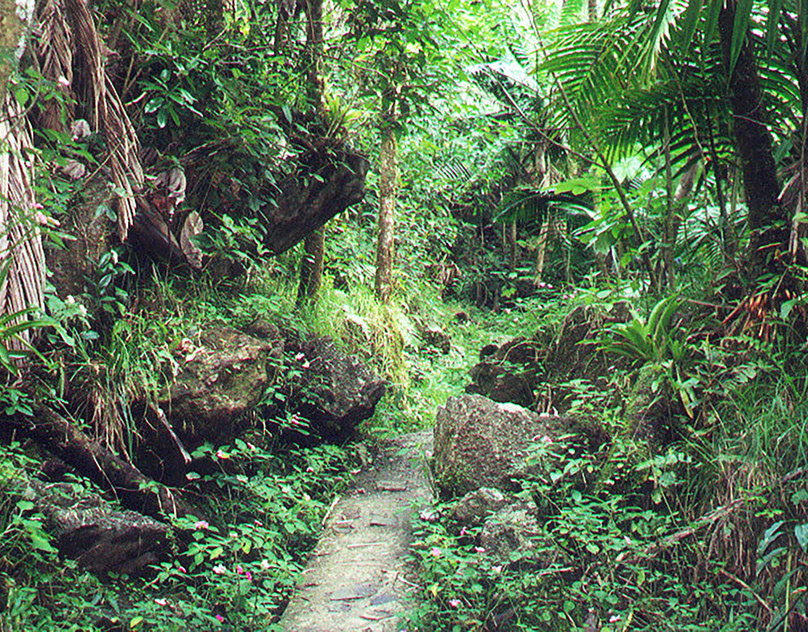El yunque puerto rico: El Portal de El Yunque
Puerto Rico’s stunning new trail traverses a tropical rainforest
The Sierra de Luquillo mountains loom over El Yunque National Forest, a UNESCO Biosphere Reserve and the final stop on the new NorEste Trail—the first multiday backpacking route in Puerto Rico.
Photograph by iStockphoto, Getty Images
Please be respectful of copyright. Unauthorized use is prohibited.
Just an hour east of the cobblestoned streets and brightly colored Spanish colonial buildings of San Juan, a symphony of bird calls and croaking coquí frogs echoes along the first backpacking trail in a U.S. tropical rainforest.
Puerto Rico’s new NorEste (Northeast) Trail takes hikers from the coral reefs and bioluminescent lagoon of Fajardo to the highest peak in El Yunque National Forest—a 28,000-acre tropical rainforest known for its beauty and biodiversity.
Only 25 to 50 hikers a day will be allowed to experience the 40-mile, three- to five-day adventure. While the official route is about 90 percent complete, you can already hike it.
While the official route is about 90 percent complete, you can already hike it.
Hikers can spot several cascading waterfalls while trekking through El Yunque National Forest.
Photograph by Dennis van de Water, Getty Images
Please be respectful of copyright. Unauthorized use is prohibited.
“Rarely can you hike in a rainforest, be at a mountain peak in the clouds, and go to the beach all in the same day,” says Keenan Adams, forest supervisor of El Yunque.
The NorEste Trail is a pioneering collaboration between a half-dozen U.S. and Puerto Rican national, municipal, and local governmental, nonprofit, and community organizations.
“When you connect a trail like this, just like other regional trails like the Pacific Crest Trail and the Appalachian Trail, you have intermixed land ownership from land reserves, state reserves, U.S. Forest Service properties, and private land in between,” says David Ilse, public services staff officer for the USDA Forest Service. “It’s quite the coordination effort to pull all of that together.”
“It’s quite the coordination effort to pull all of that together.”
At a time when more of Puerto Rico’s land is coming under private and foreign ownership, this community-led initiative lets nature and culture enthusiasts tap into the rare, rugged beauty of the island while contributing to local communities along the way.
“The only way to conserve the resource and have people become conscious stewards of it is if people love it,” says Mónica I. Pérez-Eguía, executive director of Love in Motion, a nonprofit that creates sustainable tourism experiences. “The only way to love it is to go to it, to walk the trails to learn about it. It’s not a transaction—it’s an experience; it’s a journey.”
Zoom in for more detail.
From reef to ridge
The NorEste Trail starts (or ends) in the Cabezas de San Juan Nature Reserve in Fajardo, a protected space rich with mangroves, coral reefs, dry forests, beaches, and Laguna Grande, one of Puerto Rico’s famous bioluminescent lagoons. From here, hikers can see nearly the entire route, the beachfront, and the 3,524-foot-tall El Toro.
From here, hikers can see nearly the entire route, the beachfront, and the 3,524-foot-tall El Toro.
Follow the path through Seven Seas beach and the Northeast Ecological Corridor, (an important nesting ground for leatherback sea turtles) to the Kioscos de Luquillo, a collection of family-owned food stalls. Hikers can refuel on alcapurrías (meat-stuffed fritters made from yucca, taro, or plantains) or mofongo (fried mashed green plantains served with meat or seafood).
This is technically where the first section of the trail ends for now. Ilse says organizers are currently sorting through historic land easements to continue developing the route into El Yunque. Until then, hikers can use preexisting old rail beds, farm-access roads, or walk highways PR-983 and PR-988 into the forest.
“The key is to not think of the trail as something that is fully completed,” says Adams. “You set a route that is feasible at first, then you acquire land or rights of ways throughout the years to make the route better. [At] this moment, you have to walk on the road at times.”
[At] this moment, you have to walk on the road at times.”
Please be respectful of copyright. Unauthorized use is prohibited.
Please be respectful of copyright. Unauthorized use is prohibited.
Left: At 28,000 acres, El Yunque is one of the smallest U.S. forests but also one of the most biologically diverse. Its lush, green landscape protects more than 200 species of trees and plants and 150 species of animals, many of which are endemic to the island.
Photograph by Dennis van de Water, Getty Images
Right: Constructed in 1963, Yokahú Tower offers a sweeping 10-mile radius view of El Yunque, the coastline, and the U.S. Virgin Islands.
Photograph by Photononstop, Alamy Stock Photos
Once in the forest, backpackers take the Bisley Trail to the La Coca Trail, walk up PR-191 to the Caimitillo Trail; then take the Tradewinds Trail to the El Toro Trail. Here travelers may spot endangered Puerto Rican parrots, one of five species of coquís (frogs indigenous to Puerto Rico), and other wildlife and plants endemic to the island. (Before embarking, would-be hikers should call the El Yunque Visitor Center for the latest updates on the NorEste Trail.)
(Before embarking, would-be hikers should call the El Yunque Visitor Center for the latest updates on the NorEste Trail.)
The mountain fit for a god
The Taíno, the Indigenous people who have inhabited Puerto Rico since at least 3000 B.C., considered the land that is now El Yunque (yuké meaning “white lands” in Taíno, referring to the clouds) sacred. It was where the god Yúcahu reigned from a mountain throne on El Toro, battled chaos, and protected Borinquen (the Taíno name for Puerto Rico). You can still see Taíno petroglyphs in the southern part of the forest.
Soon after the Taíno showed gold to Christopher Columbus during his second voyage to the Americas in 1493, the Spanish enslaved them. But gold wasn’t the only resource the Spanish took from Puerto Rico. Wood was also a precious commodity, and Spaniards nearly deforested the entire mainland before converting El Yunque into one of the oldest forest reserves in the Western Hemisphere in 1876.
(Puerto Rico’s Taína Route explores an Indigenous culture that was nearly wiped out. )
)
After the U.S. invaded Puerto Rico and gained control in 1898, President Theodore Roosevelt’s Civilian Conservation Corps continued reforesting El Yunque. Over 2,600 local laborers built trails, roads, and facilities—using only equipment they could carry on their backs.
Many of the trails that Love in Motion maintains today were built by the CCC. “Trails are the basis of all travel since the beginning of time—humans started walking and creating trails to get to resources. It’s recreation, but it’s also a way to safeguard the resource, access research, and education,” says Pérez-Eguía.
Several ruins left behind by the Civilian Conservation Corps can be found along hiking trails through El Yunque.
Photograph by Lorraine Boogich, Getty Images
Please be respectful of copyright. Unauthorized use is prohibited.
Protected areas, including Vieques and Culebra, two of the major islands of Puerto Rico’s archipelago of more than a hundred islands, make up 16 percent of the country—compared to the United States’ 12 percent. But protected wild spaces are becoming scarcer as private (often foreign) investors and developers continue to block access to beaches, and devastating hurricanes, which are becoming more frequent, demolish public lands.
But protected wild spaces are becoming scarcer as private (often foreign) investors and developers continue to block access to beaches, and devastating hurricanes, which are becoming more frequent, demolish public lands.
(Climate change may be pushing El Yunque to a breaking point.)
“I’ve been here since Hurricane Maria [in 2017], so I’ve seen the forest change. It wiped out everything,” says Alberto Rivera Rodríguez, field leader for Love in Motion. “Throughout the years I’ve been able to notice this healing and reforestation. This trail where we’re working now, four years ago, looked completely different. Maybe four years from now it’s gonna look completely different.”
“Come with your heart open”
The communities around the trail are hopeful about the tourism dollars the new route could bring but are concerned about how a new influx of visitors could negatively impact the region.
“We need a triple bottom line approach [people, place and profit] where true social justice is incorporated in every aspect of the operation,” says Carmen N. Portela Martínez, executive director of Amigos de El Yunque, a nonprofit focused on conservation and responsible recreation and one of the partner organizations for the trail.
Portela Martínez, executive director of Amigos de El Yunque, a nonprofit focused on conservation and responsible recreation and one of the partner organizations for the trail.
Nilsa María, who started Mariposa con Botas (Butterfly with Boots), a hiking group for women seeking a reprieve from their daily lives, says educating yourself before visiting a place is a powerful tool.
“Come with your heart open and your consciousness awake,” says María. “Before coming, do your homework. Knowing where to go and what things or situations you can be exposed to is key for enjoying to the max your well-deserved vacation.”
Rivera Rodríguez, says the completion of the NorEste Trail would be the first step in connecting all of Puerto Rico traversable by footpaths, just as it was for the Taíno. “We are blessed to be able to walk into this place,” he says. “When you’re hiking and you see the potential it kind of brings tears to your eyes. It’s gonna be beautiful.”
Tasha Prados is an award-winning branding and marketing strategist, travel writer, and founder of Duraca Strategic and Duraca Travels. Follow her on Instagram and TikTok.
Follow her on Instagram and TikTok.
Read This Next
Subscriber Exclusive Content
Why are people so dang obsessed with Mars?
How viruses shape our world
The era of greyhound racing in the U.S. is coming to an end
See how people have imagined life on Mars through history
See how NASA’s new Mars rover will explore the red planet
Why are people so dang obsessed with Mars?
How viruses shape our world
The era of greyhound racing in the U.S. is coming to an end
See how people have imagined life on Mars through history
See how NASA’s new Mars rover will explore the red planet
Why are people so dang obsessed with Mars?
How viruses shape our world
The era of greyhound racing in the U.S. is coming to an end
See how people have imagined life on Mars through history
See how NASA’s new Mars rover will explore the red planet
See More
How to get to El Yunque from 4 nearby airports
Departure date
Return date
Accommodation search
Location
Check-in date
Check-out date
Car search
Location
Pick-up date
Drop-off date
Search accommodation with Booking. com
com
|
Duration |
52 min |
|
Distance |
7460 km |
|
Average price |
€100 |
|
Possible routes |
4 found |
There are 4 ways to get from Nearby airports to El Yunque by taxi, car ferry or car
Rome2rio has found 4 ways to get from Nearby airports to El Yunque by taxi, ferry and car.
We recommend taking the taxi from San Juan (SJU) to El Yunque, which is the fastest option and takes around 52 min.
Important airports for Carolina
Frequently asked questions
Want to know about travelling to El Yunque, Puerto Rico? We have put together a list of the most frequently asked questions from our users such as: What is the cheapest mode of transport?, What is the quickest option?, How much do tickets usually cost? and many more.
What is the cheapest way to get from Nearby airports to El Yunque?
The cheapest way to get from Nearby airports to El Yunque is to car ferry and drive which costs €5 – €26 and takes 2h 5m.
More details
How do I get from Nearby airports to El Yunque the fastest?
The fastest way to get from Nearby airports to El Yunque is to taxi via San Juan (SJU). Taking this option will cost €110 – €140 and takes 52 min.
Taking this option will cost €110 – €140 and takes 52 min.
More details
How far is it from Nearby airports to El Yunque?
The distance between Nearby airports and El Yunque is 7460 km.
How do I travel from Nearby airports to El Yunque without a car?
The best way to get from Nearby airports to El Yunque without a car is to taxi via San Juan (SJU) which takes 52 min and costs €110 – €140.
More details
How long does it take to get from Nearby airports to El Yunque?
It takes approximately 52 min to drive 50 km from San Juan (SJU) to El Yunque.